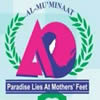
The Millennium Declaration, endorsed by 189 world leaders at the UN in September 2000, is a commitment to work together to build a safer, more prosperous and equitable world.
The Declaration was translated into a roadmap setting out eight time-bound and measurable goals (8 goals, 18 targets and 48 indicators) to be reached by 2015, known as the Millennium Development Goals (MDGs). These are development priorities and are as follows:
Goal 1 Eradicate extreme poverty and hunger
Goal 2 Achieve universal primary education
Goal 3 Promote gender equality and empower women
Goal 4 Reduce child mortality
Goal 5 Improve maternal health
Goal 6 Combat HIV/AIDS, malaria and other diseases
Goal 7 Ensure environmental sustainability
Goal 8 Develop a global partnership for development.
The Hijab Question
To the Muslim the hijab is not just a covering it’s a religious duty .It is this realization that makes Muslims the world over clamour for the use of the hijab, for themselves as well as for their girl-children.
Historically, various missionaries have denied Muslims their right to freedom of religious expression and thus many Muslim parents stopped their children, male and female, from attending the ‘western’ type schools. This accounted for the disparity in enrolment and literacy among Muslims and non-Muslim population in Nigeria.
With the advent of democracy along with various statutes and conventions on eradication of various forms of discriminations. Muslims saw the need to take their rights and make demands within legal limits.
Denial of these rights by the government of the day thus potent great danger for the attainment of MDG 3.
Millennium Development Goal 3: Seeks to Promote Gender Equality and Empower Women. The state of women globally showed that most of the poor people in the world are women and their children. The exclusion of women from education and from opportunities to contribute equally with men in public life has severe social and economic consequences in gender relations. They are caught in the vicious cycle of poverty, lack of education and technical skills leading to low-skilled low income work leading back to poverty ,high maternal and child mortality.
Muslim women have lower educational attainments than men and the women of other communities.
These sorry state led the UN to setting the target to Eliminate Gender disparity in Primary And Secondary education, preferably 2005, and in all levels of education no later than 2015.
The indicators to check if goal 3 is being achieved are four
Indicator 9: Ratio of girls to boys in primary, secondary and tertiary education.
Indicator 10: Ratio of literate women to men, 15–24 year olds.
Indicator 11: Share of women in wage employment in the non-agricultural sector.
Indicator 12: Proportion of seats held by women in national Parliament.
Allowing the Muslim girl-child wear her hijab to school is a major step towards achieving the MDG 3, mores so because two of the rationale for MDG3 are to
- Educate girls and women. Educated girls tend to become women with greater economic independence. They have an increased ability to negotiate and bargain in home, community and economic life. Educated girls and women tend to participate more in public life, and they can manage natural resources in a more sustainable manner.
- Overcome barriers to schooling for girls. There has been tremendous MDG focus on expanding enrolment in primary school. But these gains for girls are often lost in the transition to secondary school due to sexual harassment or violence at and en route to school, and due to the need for curriculum reform and for higher quality schools with greater relevance to girls’ lives.
Is Hijab anti-MDG 3 ?
No. It actually a dignifying garment for the Female Muslims coupled with the fact that Islam actually enjoins all adherents to seek knowledge as as possible. Yet it is a religious duty to obey our creator in all spheres of our mundane and religious lives.
Hijab is an act of obedience.
The hijab is an act of obedience to Allah and to His Prophet (pbuh), Allah says in the Qur’an: `It is not befitting for a believer, man or woman, when Allah and His messenger have decreed a matter that they should have an option in their decision. And whoever disobeys Allah and His Messenger, has indeed strayed in a plain error.’ (Qur’an chapter 33 verse 36).
Is Our Government Anti-MDG 3:
Any government that disallows the optional use of hijab by the Muslims girl-chid in the Public schools run by all tax-payers money is definitely working against the attainment of MDG 3.
In conclusion, MDG 3 attainment as well as attainment of the other goals can be made possible only through stronger partnerships among state actors, non-state actors, and the citizens. Protection of our religious rights which include allowing our children wear the hijab in public schools is vital to eliminating gender disparity in primary and secondary education, and in all levels of education no later than 2015.
An excuse to attend schools where waywardness and nudity is game, in the name of civilization and emancipation is sheer deceit and the west being victim of its effects is exporting it to other cultures, is not what Muslims are ready to overlook.
Sherifah Yusuf-Ajibade
Coordinator, Al-Mu’minaat Social Advocacy Project(SAP)




